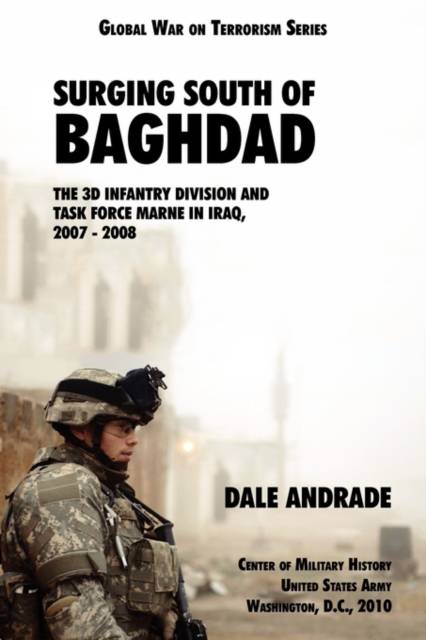
- Retrait gratuit dans votre magasin Club
- 7.000.000 titres dans notre catalogue
- Payer en toute sécurité
- Toujours un magasin près de chez vous
- Retrait gratuit dans votre magasin Club
- 7.000.0000 titres dans notre catalogue
- Payer en toute sécurité
- Toujours un magasin près de chez vous
Surging South of Baghdad
The 3d Infantry Division and Task Force MARNE in Iraq, 2007-2008
Dale Andrade, Center of Military History
Livre broché | Anglais
60,95 €
+ 121 points
Format
Description
CMH Publication 59-2-1. Global War on Terrorism Series. From the foreword: "By late 2006, 31/2 years after the dramatic capture of Baghdad by U.S. and coalition forces, the war in Iraq was going badly. Sectarian tensions had erupted into violence and American public support for the war was at an all-time low. For better or worse, the George W. Bush administration decided to gamble on a troop increase, sending thirty thousand additional U.S. troops to Iraq in order to stop the bloodshed and bring stability to Baghdad and the surrounding area. By June 2007, they were all in place, and the so-called surge began. "Surging South of Baghdad" covers this crucial period in the Iraq war from the perspective of a single division operating in the region south of the Iraqi capital. Before the surge, this slice of territory between the Tigris and Euphrates Rivers had become an insurgent safe haven where the enemy cached weapons and built bombs that fueled sectarian violence in Baghdad. Placing the 3d Infantry Division there bolstered a flagging coalition presence in the area and began the process of stabilization and rebuilding. This account offers a snapshot of the surge, its successes and shortcomings, and shows how the Army coped with the changing demands of the modern combat environment."
Spécifications
Parties prenantes
- Auteur(s) :
- Editeur:
Contenu
- Nombre de pages :
- 452
- Langue:
- Anglais
Caractéristiques
- EAN:
- 9781780390253
- Date de parution :
- 01-12-10
- Format:
- Livre broché
- Format numérique:
- Trade paperback (VS)
- Dimensions :
- 156 mm x 234 mm
- Poids :
- 625 g

Les avis
Nous publions uniquement les avis qui respectent les conditions requises. Consultez nos conditions pour les avis.






